Climate change and biodiversity are deeply interconnected, posing significant threats to biodiversity. In Australia, rising temperatures, extreme weather events, and shifting ecosystems are accelerating biodiversity loss. Protecting ecosystems and conserving biodiversity are crucial for the nation’s environmental health and resilience.
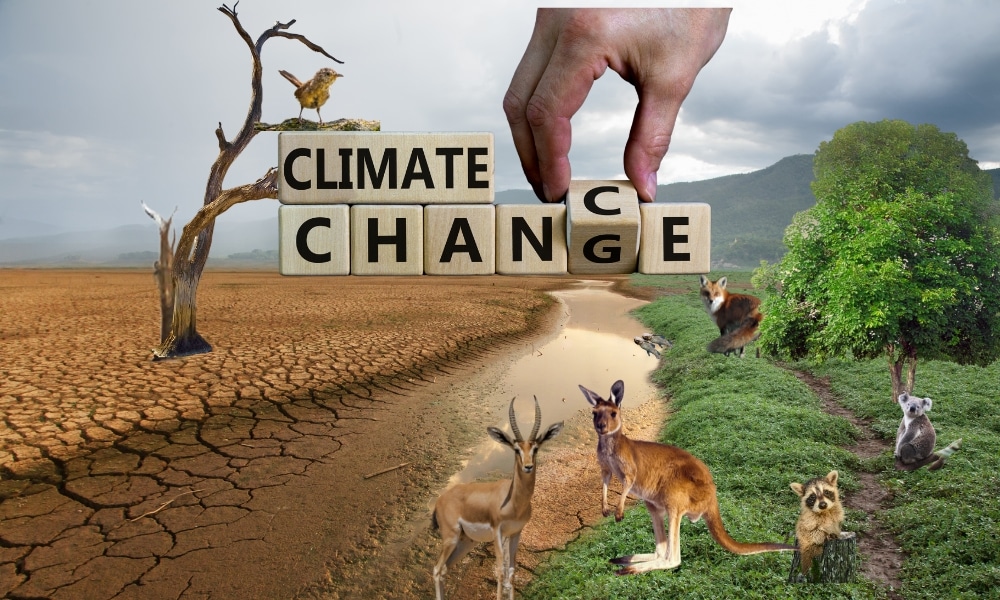
This comprehensive guide examines the effects of climate change on Australia’s ecosystems and outlines practical strategies to protect its distinctive biodiversity.
On this page
The intertwined crisis: Climate change and biodiversity loss
Climate change and biodiversity decline are deeply interconnected global crises. Rising global temperatures, altered precipitation patterns, and more frequent extreme weather events directly impact the survival and distribution of species. These changes disrupt ecological processes, weaken ecosystem resilience, and ultimately contribute to the alarming rate of biodiversity loss witnessed globally, particularly in Australia.
Did you know Energy Matters is Australia’s largest renewable news, blog and educational resource? Subscribe to Energy Matters’ weekly newsletter and keep updated even with incentives, rebates and recommended solar product offers.
How climate change drives biodiversity loss in Australia
Australia’s diverse ecosystems, from the Great Barrier Reef to the ancient Gondwanan rainforests and arid outback, are highly vulnerable to the effects of climate change. Several key impacts are already evident:
- Rising temperatures and heatwaves: Australia has experienced significant warming over the past few decades. The Bureau of Meteorology reports that Australia’s climate has warmed by approximately 1.51 ± 0.23 °C since national records began in 1910. This warming intensifies heatwaves, leading to mass mortality events in native species, such as flying foxes and marine life. Extreme heat also exacerbates bushfire risk, further devastating habitats and wildlife populations.
- Altered rainfall patterns and droughts: Changes in rainfall patterns, including more frequent and intense droughts in many regions, stress water-dependent ecosystems. Reduced water availability impacts plant survival, alters vegetation structure, and affects the animals that rely on these plants for food and shelter. From approximately 1997 to 2009, the Millennium Drought had profound and lasting impacts on southeastern Australia’s river systems and terrestrial ecosystems.
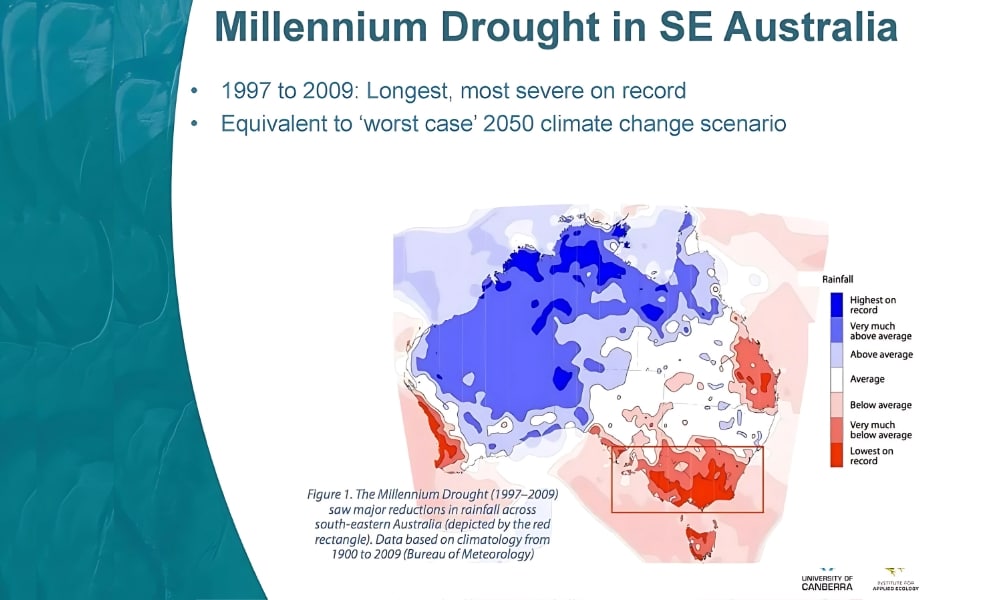
- Sea level rise and coastal impacts: Rising sea levels pose a significant threat to coastal ecosystems, including mangroves, salt marshes, and seagrass beds, vital habitats and nurseries for numerous marine species. Coastal erosion and inundation directly destroy these habitats, impacting coastal wildlife, including migratory shorebirds and sea turtles. Globally, sea levels have risen by around 20 cm since 1900, and the rate of rise is accelerating.
- Ocean acidification and marine ecosystems: The oceans’ absorption of excess carbon dioxide leads to ocean acidification. This process harms marine organisms with calcium carbonate shells and skeletons, such as corals and shellfish. The Great Barrier Reef, a global biodiversity hotspot, is severely threatened by coral bleaching events driven by warmer ocean temperatures and exacerbated by ocean acidification. Multiple mass bleaching events have occurred in recent years, resulting in significant coral mortality and affecting the entire reef ecosystem.
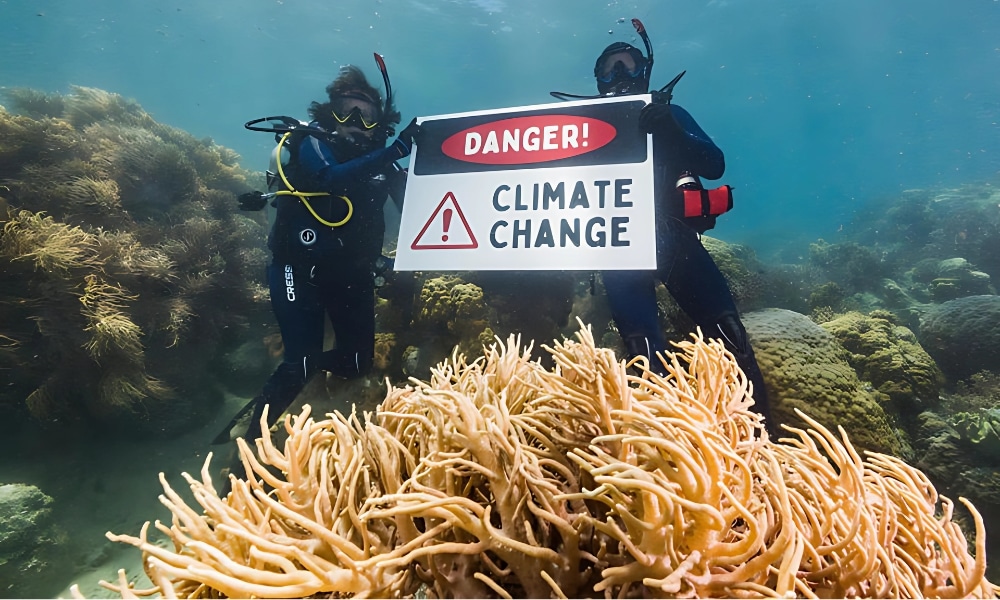
- Increased frequency and intensity of extreme weather events: Climate change is projected to increase the frequency and intensity of extreme weather events, including bushfires, cyclones, and floods. These events can cause immediate and widespread habitat destruction, leading to significant biodiversity loss. The 2019-2020 Black Summer bushfires, for example, burned millions of hectares across Australia, killing or displacing an estimated 3 billion animals.

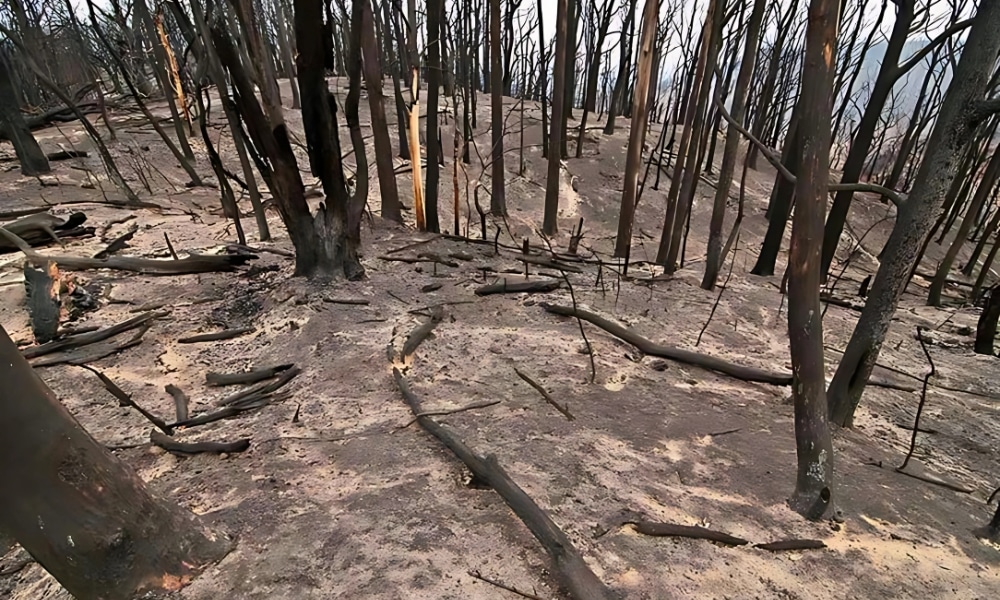
Images: National Museum of Australia – Black Saturday bushfires
- Shifts in species distribution and phenology: As the climate changes, many species are shifting their geographic ranges in search of suitable conditions. This can lead to mismatches in ecological interactions, such as predator-prey relationships and pollination timing, resulting in altered dynamics. Changes in phenology—the timing of biological events, such as flowering and migration—can also disrupt ecosystems if species respond differently to warming temperatures.
Protecting Australia's unique biodiversity: Conservation strategies
Addressing climate change and biodiversity loss impacts requires a multifaceted approach integrating mitigation and adaptation strategies. Effective biodiversity conservation in Australia demands urgent action on several fronts:
Mitigating climate change: Reducing greenhouse gas emissions
The most fundamental step in protecting Australia’s biodiversity from the impacts of climate change is to reduce greenhouse gas emissions significantly. This involves:
- Improving energy efficiency: Implementing measures to enhance energy efficiency across all sectors, including transportation, industry, and buildings, can significantly reduce energy demand and associated greenhouse gas emissions.
- Sustainable land use practices: Implementing sustainable land management practices in agriculture and forestry can reduce emissions from land-use change and enhance carbon sequestration in soils and vegetation.
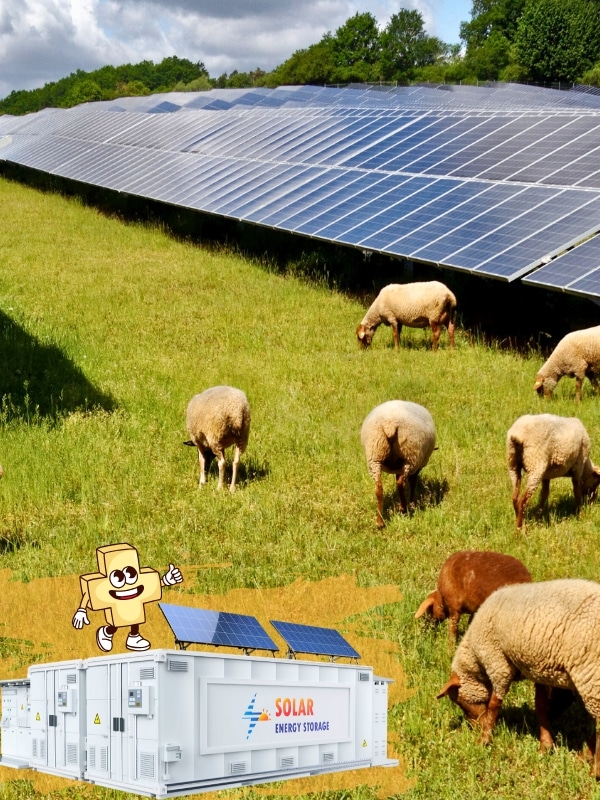
- Transitioning to renewable energy: Rapidly phasing out fossil fuels and transitioning to renewable energy sources such as solar, wind, and hydro power is crucial. Australia has immense renewable energy potential that needs to be harnessed and utilised.
- Investing in carbon capture and storage technologies: While not a primary solution, research and development into safe and effective carbon capture and storage technologies, such as solar battery storage systems, may play a role in mitigating industrial emissions.
Use Energy Matters’ easy-to-use solar power and battery storage calculator to determine the size of your solar system with storage! Our solar calculator will generate performance information and potential savings.
We can send this information to 3 of our pre-vetted and trusted local installers in your area to receive obligation-free solar quotes.
Adapting to the impacts of climate change: Building resilience
Even with ambitious mitigation efforts, some level of climate change is unavoidable. Therefore, adaptation strategies are essential to protect ecosystems and enhance their resilience:
- Establishing climate-resilient protected areas: Expanding and strategically managing protected areas, including climate refugia – less vulnerable to climate change – can provide safe havens for species. Connectivity between protected areas is also crucial to enable species to migrate in response to changing environmental conditions.
- Restoration of degraded ecosystems: Restoring degraded habitats, such as wetlands, forests, and coral reefs, can enhance their ability to withstand the impacts of climate change and provide essential resources for biodiversity.
- Managing invasive species: Climate change can exacerbate the impacts of invasive species, which can outcompete native species and further disrupt ecosystems. Robust biosecurity measures and effective control programs are crucial.
- Assisted migration and translocation: In cases where species cannot naturally adapt or shift their range quickly enough, assisted migration or translocation to more suitable environments may be considered a conservation tool, provided careful planning and risk assessment are undertaken.
- Developing climate-smart conservation planning: Integrating climate change projections into conservation planning and management strategies is crucial. This includes identifying vulnerable species and ecosystems, prioritising adaptation actions, and monitoring the effectiveness of interventions.
- Community engagement and citizen Science: Engaging local communities, Indigenous knowledge holders, and citizen scientists in monitoring and conservation efforts can significantly enhance our understanding of climate change impacts and contribute to effective biodiversity conservation.
Biodiversity conservation: What can be done?
To effectively protect ecosystems and conserve Australia’s unique biodiversity in the face of climate change, particular actions are needed:
- Increased funding for biodiversity conservation: Greater investment in research, monitoring, and on-ground conservation actions is essential. This includes supporting organisations and initiatives dedicated to biodiversity conservation.
- Strengthening environmental regulations and enforcement: Robust environmental laws and effective enforcement mechanisms are needed to prevent habitat destruction and pollution that exacerbate the impacts of climate change on biodiversity.
- Integrating indigenous knowledge: Recognising and incorporating the traditional ecological knowledge of Indigenous Australians, who have managed these lands for millennia, can provide valuable insights into sustainable land management and biodiversity conservation.
- Promoting sustainable tourism: Ecotourism initiatives that prioritise environmental protection and benefit local communities can raise awareness and generate funding for biodiversity conservation.
- Addressing cumulative impacts: Recognising and managing the cumulative effects of multiple stressors, including climate change, habitat loss, pollution, and invasive species, is crucial for adequate ecosystem protection.
Policy measures
- Legislative action: Strengthening environmental laws to protect habitats and regulate development.
- Funding and Investment: Allocating Resources for Conservation Projects and Research.
Community engagement
- Citizen Science: Encouraging public participation in biodiversity monitoring and conservation efforts.
- Education and awareness: Promoting understanding of biodiversity issues through educational programs.
Scientific research
- Monitoring and data collection: Tracking species populations and ecosystem health to inform conservation strategies.
- Restoration ecology: Developing methods to restore degraded habitats and reintroduce native species.
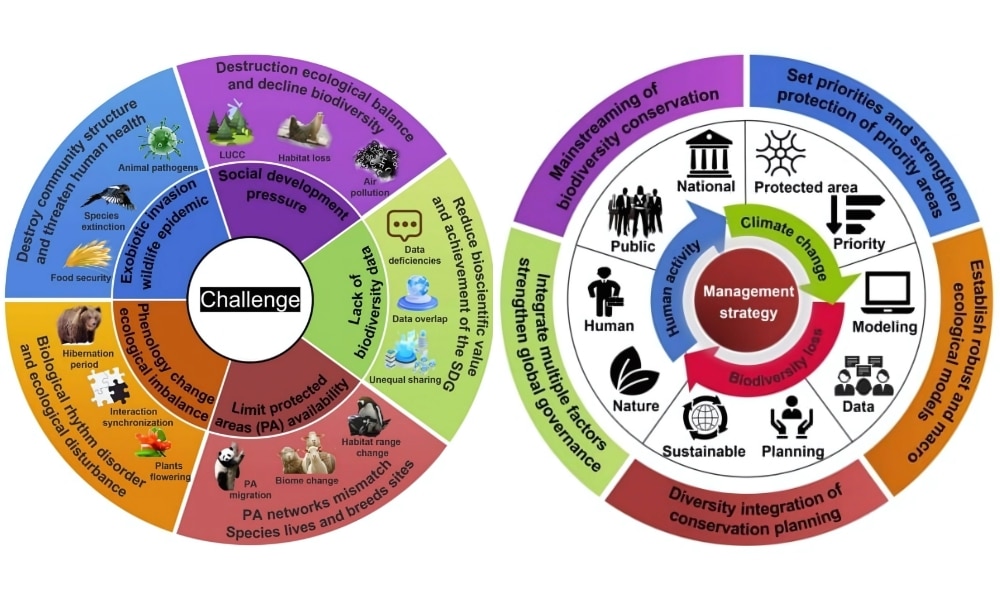
Sources: Australian Government Department of Climate Change, Energy, the Environment and Water – Understanding Climate Change | WWF Australia – Climate | State of the Environment Australia – Climate change and extreme events | Australian Museum – Impacts of Climate Change | When Did Climate Change Start In Australia? | SBS News Australia – The recent history of Australia’s climate change wars
A Compelling call to action: Energy Matters for biodiversity
The challenge of climate change and biodiversity loss in Australia is significant, but not insurmountable. By embracing a future powered by clean energy, implementing ambitious conservation strategies, and fostering a deep respect for our natural world, we can safeguard Australia’s unique biodiversity for future generations.
Invest in renewables, protect our ecosystems, and champion biodiversity conservation. The energy we invest today in a sustainable future will directly determine the health and resilience of Australia’s natural heritage tomorrow.
Join Energy Matters in making a difference—because every action counts in the fight against climate change and biodiversity loss. Let our actions reflect the profound value of this extraordinary land and its irreplaceable wildlife.
Energy Matters has been recognised for our continued excellence in the Australian solar industry. We provide our customers with high-quality resources, insight, and access to reputable solar quotes.
Our team of solar experts can help you get up to 3 FREE solar quotes from pre-qualified and vetted solar firms in your area.














































